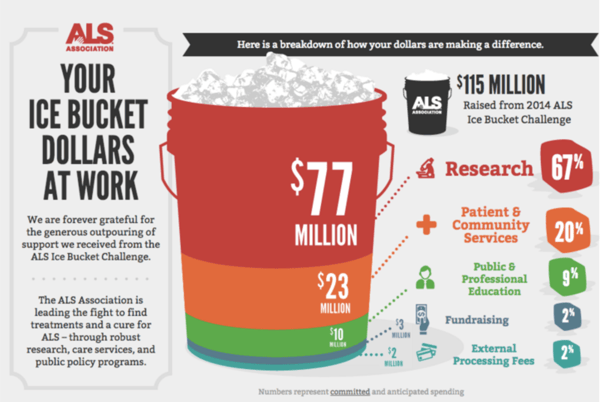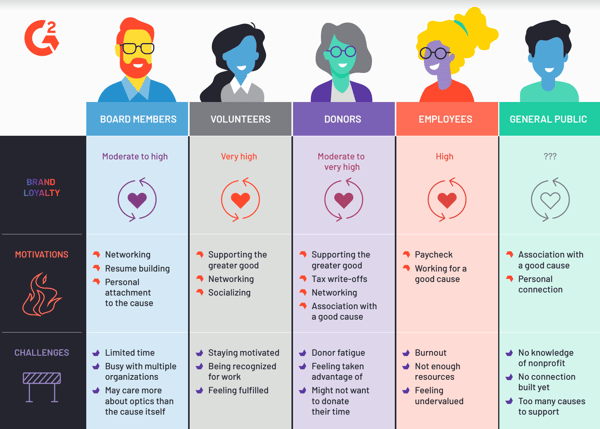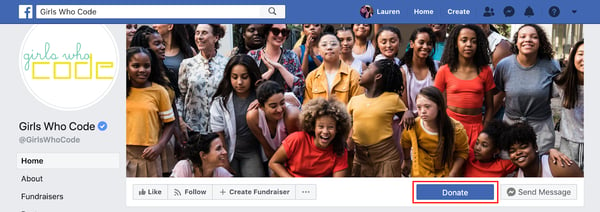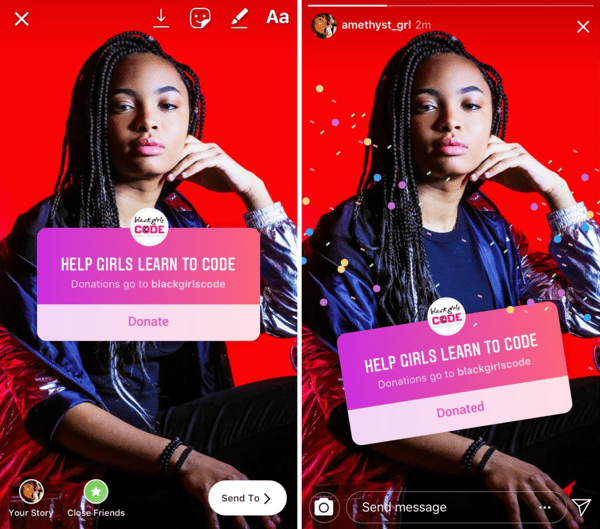November 30, 2022
 by Lauren Pope / November 30, 2022
by Lauren Pope / November 30, 2022

Activism must be marketed for it to be accessible.
Social media has come a long way from the early days of MySpace and Friendster. And so have nonprofits and their willingness to harness online communities to activate their fans and improve profits for important causes.
Implementing tools such as nonprofit CRM software ensure that your organization doesn't miss out on essential marketing and outreach channels. Investing in nonprofit marketing strategies are cost-effective and easy ways to establish your brand, make new connections, and educate a wider audience.
Nonprofit marketing uses tactics and strategies to amplify an organization's cause and mission, solicit donations, and attract volunteers and supporters.
Running a nonprofit is about creating valuable experiences and positively impacting people, communities, and their environments. Using marketing tactics, your organization can attract new supporters and connect with relevant donors and sponsors.
One of the biggest reasons nonprofits think marketing is not for them is because they view marketing with a heavy focus on fundraising and asking for money for initiatives and events.
While fundraising or conducting auctions is important for nonprofits to provide new opportunities to groups through supplemental funds, it should not be the only time your organization shows up. Marketing for nonprofits goes way beyond the "please send us money" ask and is about engaging with people through customized campaigns and social posts.
Here are some benefits of using marketing for your nonprofit:
Recent nonprofit statistics show that online giving is the way of the future regarding nonprofit marketing. There have been substantial year-over-year gains in donations and brand awareness for nonprofits utilizing popular marketing channels, especially social media in their broader marketing plan.
But creating a social media plan for a nonprofit presents unique challenges. Tighter budgets and smaller staff can make tackling the social media landscape seem difficult. The good news is that there is a right way to market your nonprofit online.
This first step is important for laying the groundwork for your social media strategy. Whether you’re already using social media or new to the game, these questions will help your team start to think about social media in a new way.
Once you’ve answered these questions and brainstormed with your team, you can move on to the next step of the process.
Like any good marketing plan, your social media marketing strategy should start with your goals. One key mistake marketers tend to make is jumping on a trend just because other companies are.
Going all in on social media might seem like a good idea at first, but without an idea of what you want your result to be, it can end in a mess. You need to ask yourself what your end goal of creating a social presence is because that will help inform your strategy.
When it comes to nonprofits specifically, there are various options you can take for your digital communications plan. When in doubt, trust what you know best.
Nothing is more frustrating than working for a wonderful nonprofit that nobody seems to know about or understand. The causes you support are important, but it can be hard to communicate that to the public.
Social media is a cost-effective way to spread your message. You can link your followers to newsworthy articles about your work, dispel myths or misunderstandings about your nonprofit, and connect with people who haven’t heard of your cause.
A perfect example of this done well is the Amyotrophic Lateral Sclerosis (ALS) Association. In 2014, they created the viral Ice Bucket Challenge, which encouraged social media users to donate to their cause and raise awareness by dumping cold buckets of ice on themselves.

The viral campaign raised more than 115 million dollars which helped fund more than 200 new research projects. Using social media helped the ALS Association spread the message about their cause and bring awareness to the daily struggles of those with ALS.
Have you ever been conversing with someone, and they can’t stop talking about themselves? Annoying, right?
That’s how your followers will feel if you focus too much on self-promotion and not enough on building a community. People want to feel connected to the nonprofits they support. Your donors, advocates, and volunteers feel a personal bond with your brand, and using social media can help you nurture those relationships.
How does this help you? It can help improve the public’s opinion of you, strengthen existing relationships, and build new ones. Taking the time to answer questions and respond to your loyal followers can increase your brand awareness.
You don’t need a large paid social media budget to reach potential volunteers. Creating a Facebook event for upcoming volunteer opportunities is a free and easy way to let your community know there are opportunities to get involved.
You can also share photos of your current volunteers to inspire new volunteers to sign up for future events. This is a great strategy because photos are sharable and heartwarming. People will comment, tag their friends, and share this content, putting more eyes on your social media pages.
Tip: Finding the right talent in the nonprofit sector isn't easy. Read our guide on recruiting for a nonprofit organization.
This is the section most nonprofits are interested in when they think about social media – and for a good reason. Online fundraising is a great resource that every nonprofit should be utilizing.
There are a couple of ways you can use social media for fundraising. You can create a crowdfunding campaign for your latest project to inspire people to donate to your cause. There’s also the option to share stories about who previous donations have helped to inspire your supporters to donate.
Social media is perfect for fundraising because it’s the perfect mix of actionable tools and visual storytelling. You can tell the story of who you aim to help and then give your supporters a clear call to action to donate to your cause.
People will talk about your brand online, whether or not you have a social presence. You must be where your audience is and can communicate with them when they are talking about you.
In the age of digital media, news of scandals and upsets travels faster than ever. Social media can be your best defense weapon if you’re ever in an unfortunate situation at the center of a communications crisis.
Knowing how to manage your brand's online reputation enables you to answer the public's questions, quickly disseminate information, and update everyone about the steps you’re taking to fix things.
Once you’ve defined your goal for your social media campaign, you’ll need to decide who to target with your content. You can create a buyer persona, also known as an audience persona, and outline your target audience’s motivations, fears, pain points, and more.
If you’ve never created an audience profile before, think of it as a playbook for dealing with different types of consumers. Someone looking to become a volunteer will have different motivations than someone looking to donate money. You’ll want to create a different audience persona for each target demographic.
Here's an example nonprofit audience persona to help get the ideas flowing:

Once you’ve created different audience personas for each of your target demographics, you can start creating your strategy for communicating with them. Remember, different personas respond to different triggers. It may seem time-consuming, but this is the best way to see conversions early and often.
The content you put on your platform is the key to a successful social media strategy. There are dozens of different content types, each with its purpose. Whether a small nonprofit or a national organization, you can use a good content marketing strategy to drive your social media plan.
Like with any marketing strategy, a content strategy is nothing without a focused end goal. You can use SMART goals to help guide your decision-making process along the way.
Remember, different projects will have different goals, meaning different content. Always reference your preferred goal-setting framework when starting a new project.
Your nonprofit is unique, and your content should reflect that. What is your selling point? Why should someone support your cause over another?
Brainstorm the things that make your mission stand out among others and make that the focus of your content strategy.
Tracking your progress is about more than just tracking the analytics. Creating content for special events, holidays, or fundraising takes forethought and planning.
A social media calendar is the perfect way to keep all of your content organized in one place. This tool will allow you to collaborate across teams, strategize for long-term content, and track what content works with your audience.
A great story is key to a great nonprofit campaign.
As humans, our brains are more likely to remember a fact if it’s presented to us as a story. Stories are emotional, relatable, and easy to wrap up a lot of information in a single package.
For those reasons, marketers across every industry are turning to brand storytelling to communicate with their audiences. Nonprofits are the perfect businesses to use brand storytelling because they are ripe with stories of the people whose organizations have helped.
Instead of telling the public what you do, show them. Create an emotional and engaging experience focusing on your cause and not yourself. This will move potential donors and volunteers and help you avoid looking self-promotional.
Nonprofits have a key advantage that most other businesses don’t: other companies like giving you free stuff. It’s true! Many businesses offer nonprofits software, tools, and resources at discounted or free rates.
The same is true for social media. As a nonprofit organization, many free tools are designed to help your business grow its online presence, reach new donors, and increase fundraising dollars online. Here are a few to help get you started.
Google for Nonprofits is a partnership program designed by Google to provide free communication and fundraising tools to qualifying nonprofits. These tools are available to any 501(c)(3) that meets Google’s eligibility requirements.
Microsoft for Nonprofits is a new series of digital solutions offered by Microsoft to help small nonprofits transform their marketing, communications, and outreach strategies online. The team designed this offering at Microsoft with small nonprofits of fewer than 10 employees in mind.
If you’d like to learn more about any of the tools listed above or are interested in how you can register for an account, read our complete guide to Microsoft for Nonprofits for more information.
You’re probably already familiar with Facebook Fundraisers. The popular social media platform has made it easy for 501(c)(3) charities to create online fundraisers that allow themselves or others to collect money for your charity.
Facebook Fundraisers offer tools such as birthday fundraisers, donation matching, and more. You can even create a call-to-action on your page or any post you publish that asks viewers to donate to your cause.

Facebook is constantly changing its offerings for Facebook Fundraisers. The best way to stay up to date with all the latest offerings is to follow the Facebook Fundraisers page and explore all the offerings available for your nonprofit.
Much like Facebook, Instagram also offers nonprofits a way to reach their audience with a donation button. First, you’ll need to register with Facebook as an approved 501(c)(3), and then you can integrate the donation button into your Instagram stories.

Image courtesy of Instagram
Instagram’s donation tool is still relatively new and offers less flexibility than Facebook's. Keep an eye on this platform as the donation tools for nonprofits roll out over the next couple of years. Chances are, this will become a big focus for nonprofit marketing shortly.
If your marketing goals include brand awareness, public awareness of an issue, and thought leadership, Twitter is the platform you should check out.
Suppose your nonprofit is an advocacy or research-based organization. In that case, Twitter is perfect as it can help announce and distribute messages quickly and to a wide group (think the whole world).
All of this work means nothing if you’re not tracking the impact it has. That’s why tracking everything with analytics is key to your success. Luckily, most major social media platforms allow you to track analytics (e.g., Twitter analytics) within the platform without much hassle.
Tracking analytics is the best way to see what content is performing well, which posts get your donors to convert, and how to fine-tune your strategy for optimal performance. All major social media platforms make learning easy, and many offer free courses to help beginners get their feet wet.
Driving traffic to your social media pages is just the first step. Where are you sending them from there? For most nonprofits, the answer is their website. Here’s the ugly truth. A bad website will cost you serious money.
Think about the last time you were on a bad website.
You likely intended to purchase a product or service but quit because the user interface was too difficult to use. Imagine a donor using your website and can’t find where to donate. Or maybe a volunteer is trying to sign up for an event and can’t find the page to register.
Poor website optimization can corrupt the user experience and make your nonprofit seem less trustworthy. Your social media presence is your public-facing persona; your website is your business persona. The pair need to work together harmoniously for your nonprofit to see success.
The great thing about creating a marketing strategy for your nonprofit is that you don’t have to focus on just one specific area. You can choose and match various options to fit your unique needs. Play around with your strategy; don’t be afraid to switch things up as your marketing tactics, goals, and needs evolve.
Nonprofit marketing is perfect for attracting volunteers to help meet your goals. Looking to support your volunteer management strategy? Start by reading our guide.
Lauren Pope is a former content marketer at G2. You can find her work featured on CNBC, Yahoo! Finance, the G2 Learning Hub, and other sites. In her free time, Lauren enjoys watching true crime shows and singing karaoke. (she/her/hers)
What if there was a way to support nonprofits and boost your brand awareness?
 by Lauren Pope
by Lauren Pope
Migrating your corporate information to the cloud can save you time and money—but it also...
 by Lauren Pope
by Lauren Pope
Are you ready to take your marketing abroad?
 by Lauren Pope
by Lauren Pope
What if there was a way to support nonprofits and boost your brand awareness?
 by Lauren Pope
by Lauren Pope
Migrating your corporate information to the cloud can save you time and money—but it also...
 by Lauren Pope
by Lauren Pope


